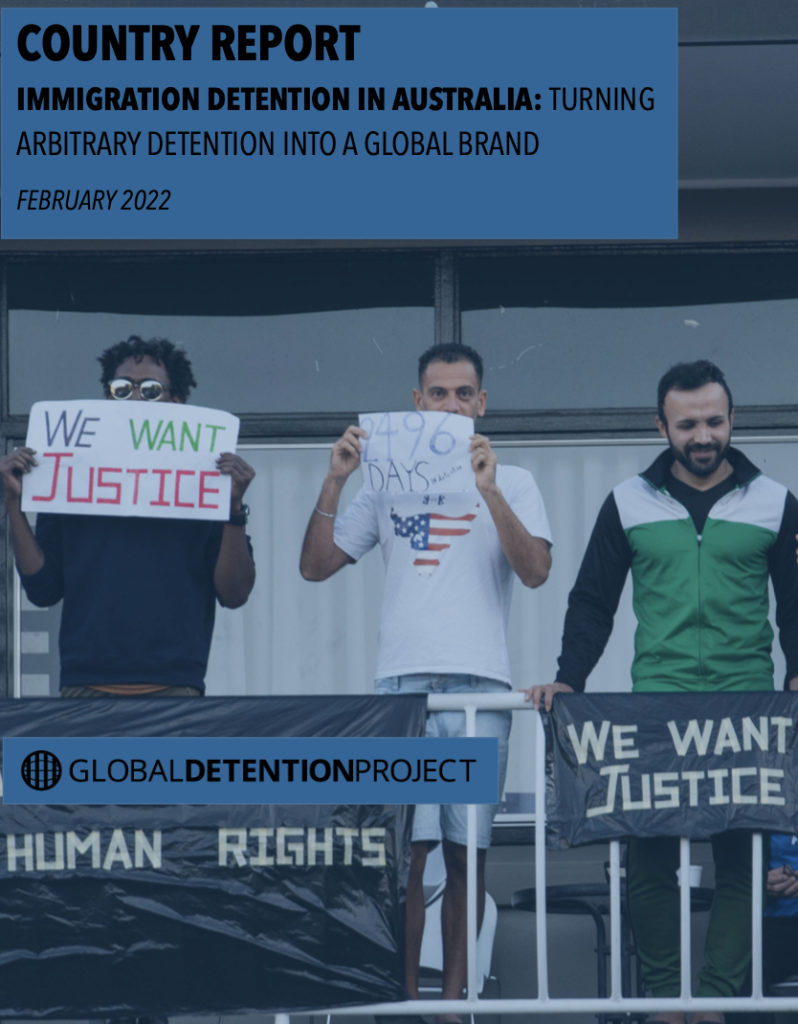(February 2022) Australia has a severe and punitive immigration detention system. It’s policy of mandatory, indefinite detention does not distinguish between adults or children, visa violators or asylum seekers. Dozens have languished in detention for more than a decade. Private contractors, paid billions to operate centres, have been continually criticized for abusing detainees and failing to provide services. Observers have repeatedly denounced the detention regime, including its offshore operations, as violating human rights and international law. The price tag for maintaining the system is astronomical: It costs nearly $400,000 per detainee/year compared to less than $50,000 for community housing. But the physical and mental costs are even higher: Experts have documented the devastating impact of prolonged detention on the health of detainees, which has led to high levels of self-harm, long-term illnesses, and severe psychological disorders like schizophrenia.
Visit the Australia Detention Data Page
KEY FINDINGS
- Australia is one of the few countries in the world with a blanket policy of mandatory, indefinite detention of all people who do not have a visa, including children and asylum seekers.
- Human rights agencies have repeatedly found Australia’s detention system to be arbitrary, discriminatory, and in violation of international law.
- As of January 2022, Australia had failed to establish a National Preventive Mechanism—a critical detention monitoring body—in each of its territories as required by the Optional Protocol to the UN Convention against Torture, which it ratified in 2017.
- People languish in detention for years: The average length of detention is nearly 700 days and dozens have been detained for more than five years.
- Thousands of children have been subject to prolonged detention, resulting in severe physical and mental harm.
- Detention is very expensive: It costs nearly $400,000 per detainee per year compared to less than $50,000 for housing a person in the community.
- Australia has outsourced its entire detention system to a series of private contractors who have been accused of committing grave abuses–including murder–against detainees and cutting corners on the delivery services.
- Monitors have repeatedly criticised the appalling conditions in Australia’s detention facilities, including overcrowding and lack of communal and outdoor spaces, the remote location of many detention centres, and the extreme isolation of detainees, who are prevented from using mobile phones.
- Prolonged detention has catastrophic impacts on the physical and mental health of detainees, leading to high rates of self-harm, depression, anxiety, and psychological disorders.
- Unlike other countries who released immigration detainees into the community at the start of the COVID-19 pandemic, Australia increased its detainee population during the first year of the pandemic.
- The country ceased its overseas detention operations in Papua New Guinea but it maintains offshore processing in Nauru. It also re-opened the detention facility on Christmas Island after the emergence of COVID-19 even though the Australian Human Rights Commission said it was not suitable for confining people during a pandemic.
- Independent observers have faced barriers gaining access to Nauru and Manus Island and Australia has been persistently criticized for the lack of transparency surrounding its offshore operations.
- Detainees in offshore detention facilities must wait years to be transported to Australia for medical treatment, but a 2019 “Medevac Bill” that allowed for such transfers was quickly repealed.



